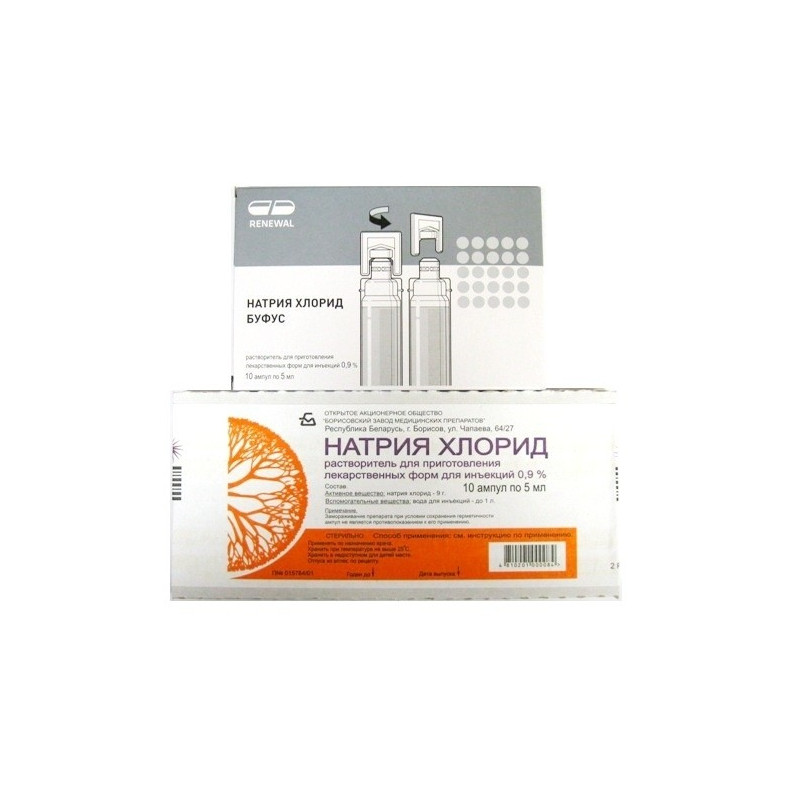



 All payments are encrypted via SSL
All payments are encrypted via SSL
 Full Refund if you haven't received your order
Full Refund if you haven't received your order
Large losses of extracellular fluid or insufficient intake of it (toxic dyspepsia, cholera, diarrhea, "indomitable" vomiting, extensive burns with severe exudation, etc.), hypochloremia and hyponatremia with dehydration, intestinal obstruction, intoxication; washing the wounds, eyes, nasal mucosa, dissolving and dilution of drugs and moisturizing dressings. Hypertonic solution - pulmonary, gastric and intestinal bleeding, forced diuresis (auxiliary osmotic diuretic), dehydration, poisoning with silver nitrate, purulent wounds (local), constipation (rectal).
Hypernatremia, acidosis, hyperchloremia, hypokalemia, extracellular overhydration; circulatory disorders threatening swelling of the brain and lungs; cerebral edema, pulmonary edema, acute LV failure, concomitant administration of GCS in high doses. C caution. Decompensated CHF, CRF (oligo-, anuria).
In / in, drip; n / a, rectally, topically, externally. 0.9% NaCl solution: before the introduction of the solution is heated to 36-38 degrees C. The dose is determined depending on the loss of body fluids, Na + and Cl- and an average of 1 l / day. With large losses of fluid and severe intoxication, it is possible to administer up to 3 l / day. The rate of injection is 540 ml / h; if necessary, the rate of administration is increased. Children with a pronounced decrease in blood pressure on the background of dehydration (until laboratory parameters are determined) are injected with 20-30 ml / kg. In the future, the dosing regimen is adjusted depending on laboratory parameters. With long-term administration of large doses of 0.9% NaCl solution, it is necessary to monitor electrolytes in the plasma and urine. 0.9% NaCl solution is used to wash wounds, eyes, nasal mucosa, moisturizing dressings. Hypertonic 10% solution is injected into / in the jet, in an amount of 20 ml; for washing the stomach - 2-5%, in enemas (100 ml) - 5% solution. Eye drops prescribed 1-2 drops in the affected eye during the daytime. In enemas - 100 ml of 5% solution to stimulate bowel movement with constipation or up to 3 l / day of 0.9% solution.
Acidosis, overhydration, hypokalemia.
When mixed with other drugs, it is necessary to visually monitor compatibility (however, invisible and therapeutic incompatibility is possible).
